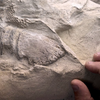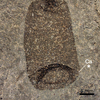The Hun Family Tree

"Attila and his Hordes Overrun Italy and the Arts" by Eugène Delacroix (1843-1847)
Post Author - Ellis Nolan
Under the infamous King Attila, the Huns were a nomadic people who ravaged the waning Roman Empire during the fifth century. Their pillaging prowess is the stuff of legend, however, where these people came from remains an anthropological mystery. In a recent study, a group of researchers aims to clear some of the fog surrounding their origins.
Previously, scientists believed the etymology of the name “Hun” derived from the Chinese “Xiongnu,” another nomadic group descended from the mountain regions of Central Asia. The only problem is that the two groups are separated by about 300 years, and until recently, archaeological evidence was insufficient to link the two groups.

Map of burial sites used in the study
In a new study, researchers examined a few hundred Hun graves and the DNA of skeletons buried between 1600 and 1500 years ago. As it turns out, multiple Hun specimens had DNA that matched that of their would-be Xiongnu ancestors. However, this group was the vast minority, which led scientists to believe the Huns did not come about from a mass Xiongnu migration.
Rather, the researchers suspect that following the fall of the Xiongnu in 100 CE, some members forged West towards Rome, exiled or in search of better circumstances. Furthermore, it still remains unclear whether these Huns saw themselves as Xiongnu at all, since their burial sites lack the adornments of the Xiongnu elite they descended from.
The researchers stress that the journey of the Xiongnu migrants would have been a perilous one, traveling thousands of miles in unfamiliar territory, many likely perishing in the process. Did Attila himself descend from this brave bunch? Scientists say it’s unlikely, but it’s not as though the Huns were a homogenous group, as this study reveals. As the saying might go, it takes a village to defeat the Roman empire.
Featured Product
Joe Frazier Boxing Glove
Cool Things!

Is “Paul is Dead” Dead?: Unpacking One Of Pop Culture’s Most Enduring Conspiracy Theories

Scientists Discover Hooves and Skin in Preserved Dinosaur "Mummies!"
A dinosaur discovery just in time for Halloween! In a new analysis of a group of fossils from Wyoming, Scientists have determined this group of fossils are dinosaur “mummies,” with preserved skin and even hooves.

Scientists Record a Bat Catching Birds Mid-Flight!
Bats, birds, screeches, oh my! In a reverse-Hitchcock twist, a new study reveals that a species of European bat catches and eats birds mid-flight.
Specimen Deep Dives

The House that Ruth Built: The Story of the Old Yankee Stadium

The Queen of the Skies: the Story of the Boeing 747

Old Ironsides: The USS Constitution and the Start of the U.S. Navy
Long Form Articles

The Artist Behind the Macintosh: Susan Kare and Apple Computers
While the two Steves, Jobs and Wozniak, are the most well known faces behind Apple computers, equally important to the products and culture of the company were those who crafted the experience of using their computers through design. The most notable of these visual architects was Susan Kare, a designer responsible for “humanizing” Macintosh computers.

Can I Lick It? Yes You Can!
Have you ever been unable to tell if a fossil was really a fossil, but you were too embarrassed to admit it? Have you ever wanted to lick a fossil just because, but you didn’t want to risk judgment from your peers? Well, good news! You can kill two birds with one stone! Licking a fossil can actually help you determine if it’s the real deal or just another rock.

Is It Legal To Own a Meteorite: How to Start Your Outer Space Collection!
Meteorites are some of the rarest geological specimens to be found on Earth. Of course, since these stones are not of our world, purchasing them can sometimes be a confusing process. Is it legal to own a meteorite? In short, yes! Read on for help starting your cosmic collection!


















